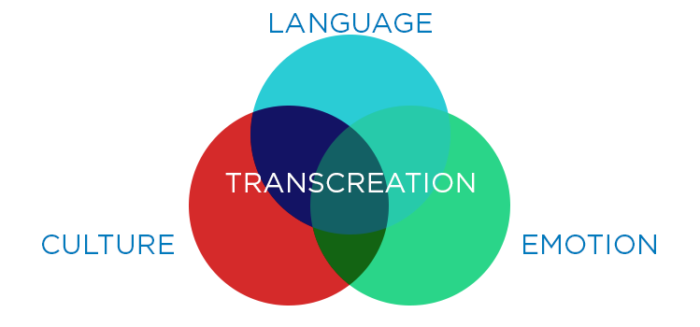A Guide to Global Multilingual Online Marketing Strategies
Taking your company across borders is one of those business strategies that is often considered, but seldom attempted. This is mostly because of the very real challenges that face a business when they are trying to market their business in different languages.
International marketing is never an easy task; it requires a great deal of investment from both a time and budget perspective.
Simply adding web translated content to your website and marketing materials will never have an impact on foreign customers and prospects, since poor content certainly won’t convince anyone that your company is the one they should trust.
If your business is truly serious about creating a global multilingual marketing strategy, then a well-honed approach that includes all the considerations that prepare you for the challenges that await you just around the corner, is an absolute must.
Is Your Business Ready for an International Market?
Multilingual marketing won’t suit every business, and before you even think about crossing borders, it’s vital to ensure that your domestic efforts are as effective as they could be. If what you’re doing at home isn’t working as well as it could be, then that should be reason enough to question whether you’re ready to tap into an unknown market.
However, if you feel your business is ready to explore new avenues and your data backs that notion, then there’s no reason why you can’t be a great success.
Facing A New & Unknown Audience

No two countries in the world are the same; each has its own expectations, culture and philosophies. This should tell you that your marketing approach should adapt to these audiences, as they’ll often be completely different from the audiences you’re used to.
For example, what may pass as humorous in one country could easily be misconstrued as offensive in another.
Much weight is placed behind protocol and ceremony in many Asian countries for example, and therefore their idea of customer service may differ significantly to that which we’re used to in the West, where a more informal interaction is commonplace.
To give another example, in the UK the colour red is considered to be loving, warm and positive. In Asian countries it symbolises joy. However, in the Middle East, this colour is used as a warning and to symbolise danger or evil.
These differences may not seem like they matter all that much, but they will ultimately play a significant role in whether your venture into new markets is successful. Cultural research is absolutely vital when you’re looking to communicate with a new audience.
The Process of Transcreation

The term transcreation is used to describe the correct translation of a marketing message to make it work in whatever language and culture is required.
Each piece of content you create is designed to impart a message, and simple word-for-word translation can often blunt your message, change the way the message is received and, in the worst-case scenario, render it completely unusable.
This means that the words, phrases and images you’ve used in your mother tongue may need to change significantly to ensure you’re keeping cultural expectations in mind, while also keeping the general context intact. Finding the right company to help you balance this very fine balance will be a key component to your success, but we’ll cover this in more depth later on.
Select the Right Distribution Path for Your Content
Once you’ve sat down and made the effort to understand your new audience and what you’d like to tell them, you’ll need to figure out how best to deliver your message.
Of course, such a diverse array of channels and platforms will give you the opportunity to target the right message at the right demographics, so it really just becomes a case of creating something that will speak to your key audiences.
When you consider what content you’d like to put forward, you’ll need to think about how that will work with your chosen platform. For example, social media is not as widespread in some areas of the world as it is in the West, and even then each platform will have its own set of territorial demographic data that you’ll need to understand thoroughly.
Taking some time to understand how your foreign audiences interact with the web will be absolutely vital.
The Role of International SEO

Ranking your business highly for your key search terms in organic search engines is probably one of your most important domestic goals. That said, in terms of an effective multilingual marketing strategy, international SEO is just as crucial for piquing the interest of locals in your target areas.
While in many aspects, international SEO is very similar to domestic SEO, there are a few key differences that you should be aware of before you appoint an entrusted accredited expert to begin transcreation.
MOZ’s 2020 guide to international SEO is a great place to start if you’re looking to get a firm understanding of the basics, particularly if you’re looking to learn about the HTML tags that direct traffic to the appropriate language page, and prevents penalties for duplicate content.
Using these tags to drive traffic to the correct page for their region is a must if you’re looking to take your website to users in other territories.
Choosing the Right Personnel
Finding the right personnel for a job of this scale can be a complex challenge. For a start, effective transcreation demands professionals with a near native-level mastery of any given language. Anything less than this could have a negative impact on the content created, which sets you back before you’ve even so much as taken two steps forward.
One solution, and the most effective, is to outsource your entire project to an accredited third-party with the experience and skills necessary to help you successfully tap into multilingual markets.
Not only is this option the most cost-effective, but it also has the potential to offer optimal results in far less time, since the professional you’re choosing is well versed in these kinds of projects.
On the other hand, your business may decide they have or can recruit the required staff for the job in-house. However, in most cases, this will mean more significant investment, in both time and capital to ensure you have the right professionals and skillsets on board.
In the end, of course, the decision is your own, but it’s crucial that whichever path you travel is very carefully considered.
Takeaways
Global reach is a highly prized operational aim for many businesses, in part, because of the significant impact that it will have on the company if success is found.
Of course, a project of this magnitude can cause some amount of anxiety, given how finances and the future of the company may change. However, with enough preparation and the right language professional alongside you, your global multilingual marketing strategies can really turn your business into a jet setting success story.
If the idea of creating a global multilingual marketing strategy is something that could really benefit your business, then don’t hesitate to reach out to us, and we can help to turn your goal into a reality.



